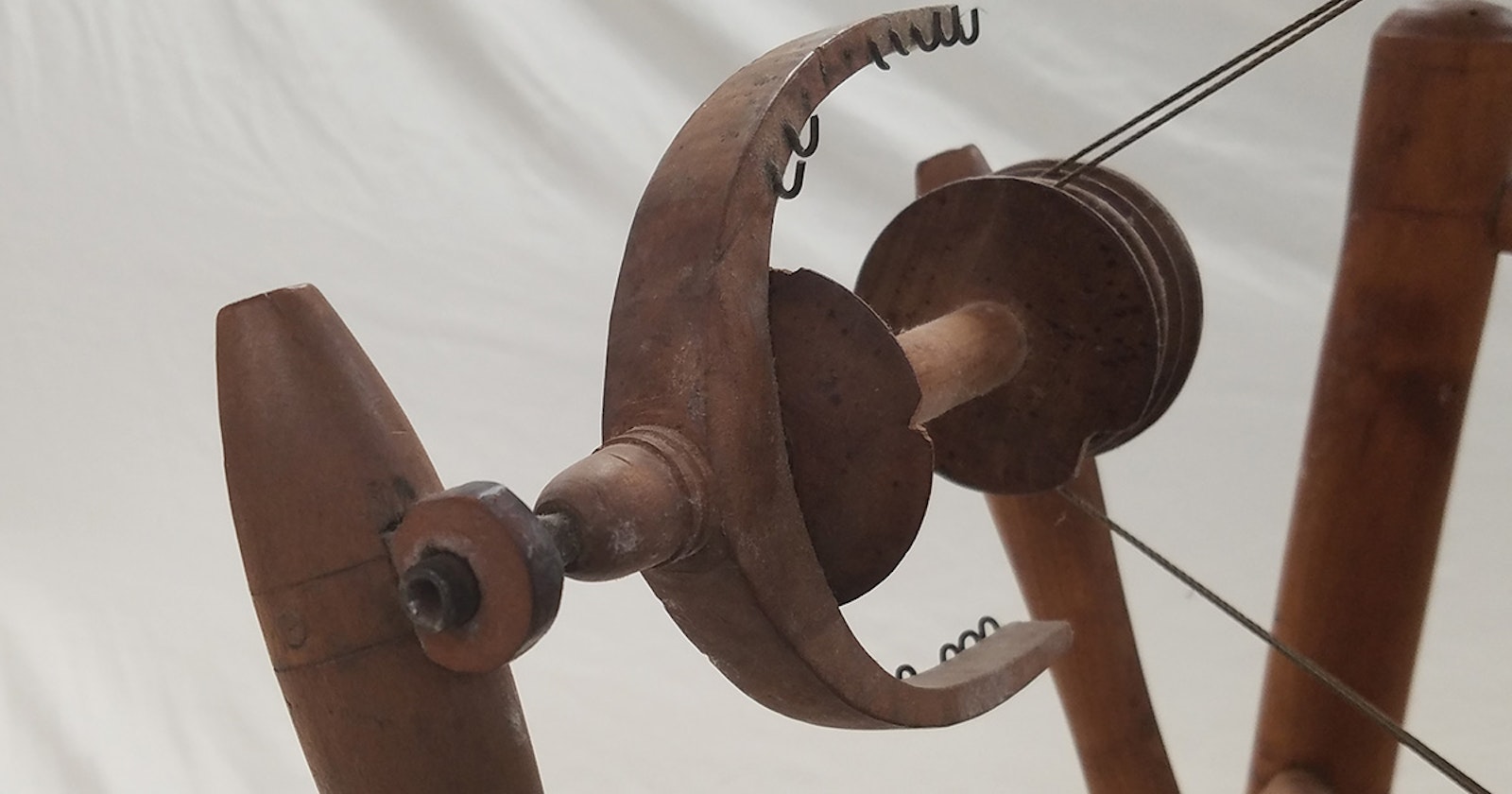First of all, I apologize for bursting any romantic ideas about spinning wheels, but they are simply a means of twisting fiber into a usable thread. If you show me a skein of yarn that you have spun and ask me what wheel was used to make it, I simply couldn’t tell you.
For all I know, you might have spun it on a $20 handspindle, or you might have spun it on a wheel costing thousands of dollars. There is simply no way of telling. What I can tell you is that there is a noticeable difference for the spinner who is creating yarn on a spindle or on a fine working piece of art that spins yarn.
As a spinner who spins on antique and modern wheels alike, it’s easy for me to make comparisons between wheels. I have often said that I wish I could bring spinners from the past forward to today and let them see how we spin yarn. I wonder what they would say and what they would think of our rainbow-dyed, blended-fiber roving or top. I have no doubt that these spinners would point and giggle at our art yarns and be puzzled at how to use them. Remember, many folks spun fine yarn, then wove and knitted with those fine yarns. The whole idea of a bulky knitted sweater didn’t exist in their world. We see this when we take a closer look at spinning wheels that have some age.
If a double-treadle wheel such as the Lendrum on the left seems modern, consider this nineteenth-century chair wheel, which has not only two treadles but also two drive wheels. Photos by Tom Knisely
Look at the flyer, for starters. The orifice is often a quarter inch or less in diameter. The hooks that guide the thread onto the bobbin were often made of thin wire. This is a clear clue that these wheels were intended to spin fine thread such as linen, but there is no reason not to spin wool or other fibers on these flyers. I have, and so might the spinners of the past. I then look at the whorl at the end of the flyer. It is often very small, with one or two grooves. These wheels are mostly Saxony wheels, with the occasional castle wheel, but all of them work on a double-drive system.
My first spinning wheel was just such a wheel, made in the first half of the nineteenth century. This was the wheel I learned to spin on. It had just two ratios: fast and faster. If I wanted to spin a yarn with soft twist, I had to treadle slowly and increase the take-up. If I was trying to spin a thread such as linen and wanted tighter twist, I simply treadled a little faster and slowed the take-up. That old Saxony wheel is happiest when spinning linen.
This 200-year-old tow wheel uses bobbin-lead tension, which contemporary spinners will recognize from Louet wheels.
Today, we are spoiled with options of whorl size and different ratios. I remember reading the advertisements in early issues of Spin Off and seeing wheel makers boasting about the range of ratios they offered with their wheels. I was completely baffled about what they were talking about. I had learned to control the twist with my treadling, not the relationship between the wheel’s diameter and whorl size. It was revolutionary to me that I could have one treadling speed and simply change out the whorls depending on whether I wanted a soft twist or a tight twist. Wow! If that is the case, I wondered, what is the ratio between the wheel and spindle groove on my walking wheel? I quickly measured the circumference of the wheel’s rim and the circumference of the spindle whorl at the other end of the table. Dividing one into the other showed that my walking wheel had a ratio of 125:1. No wonder these wheels are fast and efficient.
—Tom Knisely
Tom Knisely is the resident weaving and spinning instructor for Red Stone Glen Fiber Arts Center in York Haven, Pennsylvania. A weaver and spinner for more than four decades, Tom is a regular contributor to Handwoven, the instructor in several instructional videos, and author of three weaving books. Tom enjoys collecting antique and ethnic textiles to use in his classes as inspiration for project ideas.
Download the Fall 2018 issue ofSpin Off_ to read more about Tom Knisely’s passion for spinning tools in his article “Everything Old Is New Again (Especially Spinning Equipment).”_



